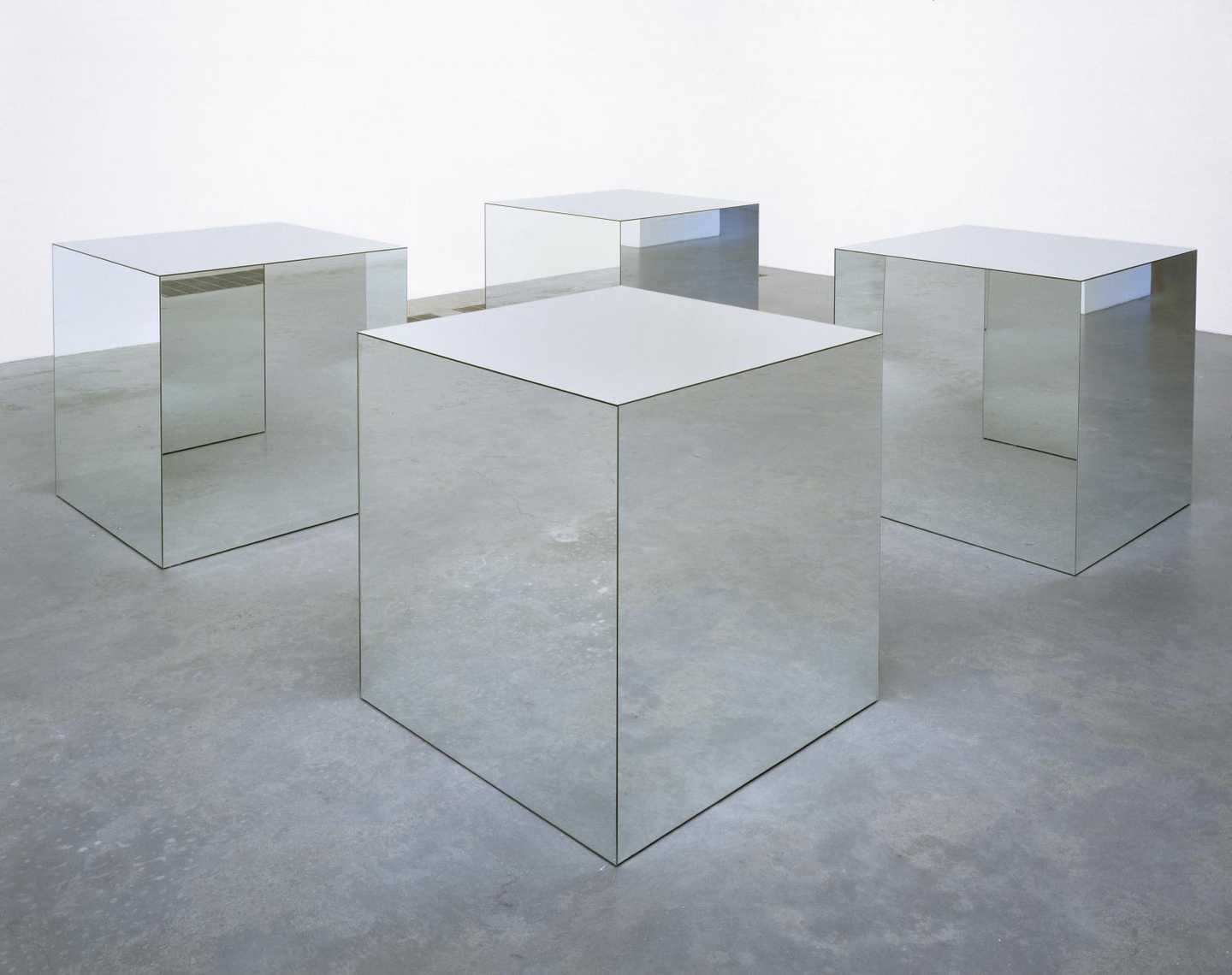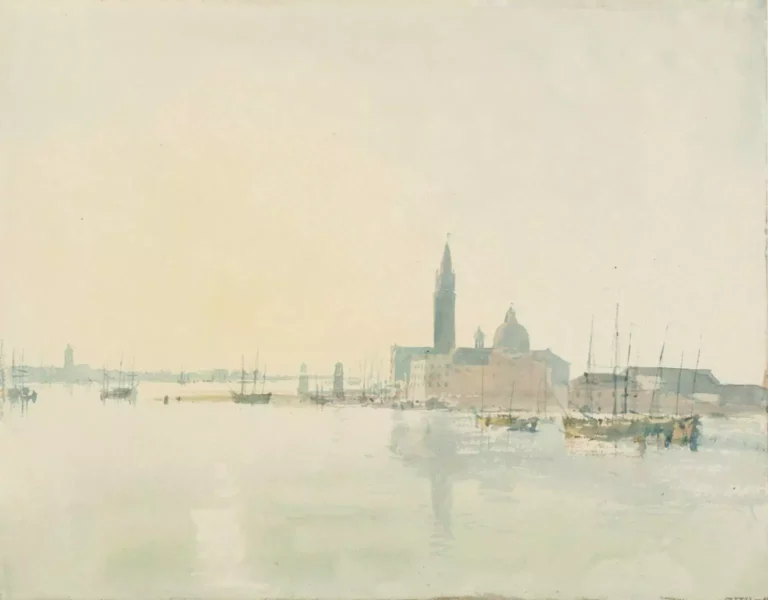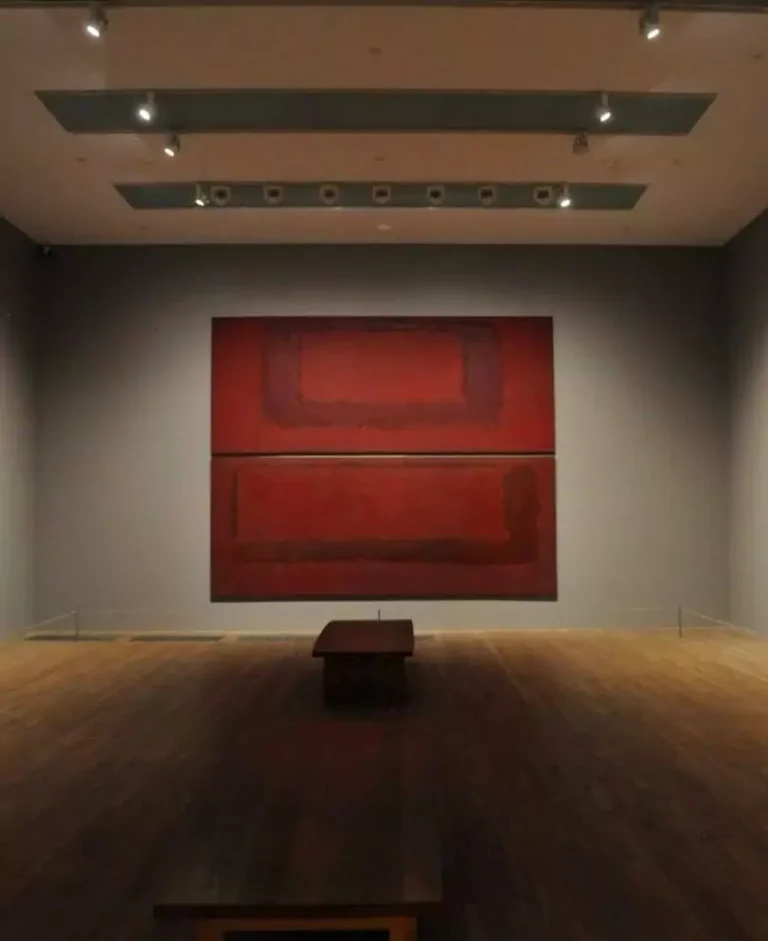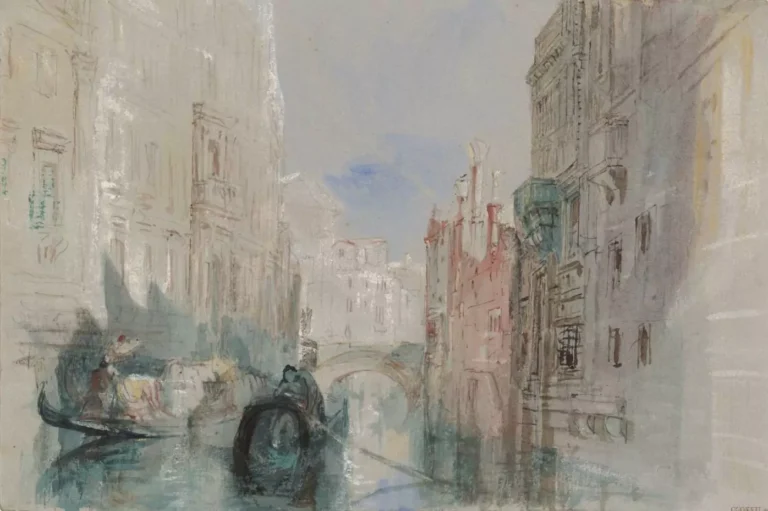Looking for a muse? Check no further. Discover the Best of Art, Culture, History & Beyond!

| Artist | Robert Morris |
|---|---|
| Title | Untitled |
| Year | 1965, reconstructed 1971 |
| Medium | Mirror glass and wood |
| Dimensions | Each cube: 914 x 914 x 914 mm – overall display dimensions are variable |
| Location | Tate, London |
Morris’s Minimalist sculptures of the mid-1960s consist of rigorously pared down geometric forms. He typically arranged these into ‘situations’ where ‘one is aware of one’s own body at the same time that one is aware of the piece’. This work demonstrates the principle. As the viewer walks around the four cubes, their mirrored surfaces produce complex and shifting interactions between gallery and spectator. The cubes were originally installed in the garden at Tate for Morris’s 1971 exhibition, but were put on show in the galleries when the exhibition had to be re-made with substitute works.
Robert Morris (February 9, 1931 – November 28, 2018) was an American sculptor, conceptual artist and writer. He was regarded as having been one of the most prominent theorists of Minimalism along with Donald Judd, but also made important contributions to the development of performance art, land art, the Process Art movement, and installation art. Morris lived and worked in New York. In 2013 as part of the October Files, MIT Press published a volume on Morris, examining his work and influence, edited by Julia Bryan-Wilson.
Morris’ first set of four mirror boxes was made in 1965 for his exhibition at the Green Gallery, New York, in February 1965, but he subsequently destroyed it because the boxes were made of perspex and the mirroring would not stick on. According to the Castelli records, these boxes were 21in (53.5cm) cubes, which the artist says tallies with his recollections. (It also seems to be confirmed by a photograph showing them in the Green Gallery installation). However Annette Michelson, loc. cit., states that they were 3ft (91.5cm) cubes and were set 6ft (183cm) apart, while in the Whitney catalogue they are reproduced as 28in (71cm) cubes. Morris’ retrospective exhibition at Washington and Detroit in 1969-70 (21) included a ‘current reconstruction, original damaged’ with perspex mirrors on wood, 3 x 3 x 3ft (91.5 x 91.5 x 91.5cm), but this was destroyed at the end of the exhibition.
The artist stated (letter of 27 June 1974) that he believes he has made three or four versions, most probably only three as this is his usual limit. The Tate’s version was first fabricated in London in 1971 for his exhibition at the Tate Gallery, and then remade in 1976, with his permission, in more permanent materials (3mm Sandersilver Mirror S.Q. over Aeroweb F-Board cubes). A further version the same size in highly polished stainless steel was made in 1974 for the Sonnabend Gallery, New York, the advantage of stainless steel being that it does not break. The Castelli records also list a third version, said to have been made for the Galleria Sperone in Turin, but this has never been fabricated and the artist says he does not plan to make any more.
He added in the same letter: ‘Originally the space between the boxes was equal to the combined volume of the 4 boxes, but I haven’t followed that rule recently and generally place them more with regard to the space of the room – always maintaining enough room – some 5 or 6 feet at minimum – between them for walking.’

This article was published on ArtAddict Galleria, where we explore the intersections of art, history, and culture. Stay tuned for more insights and discoveries!



